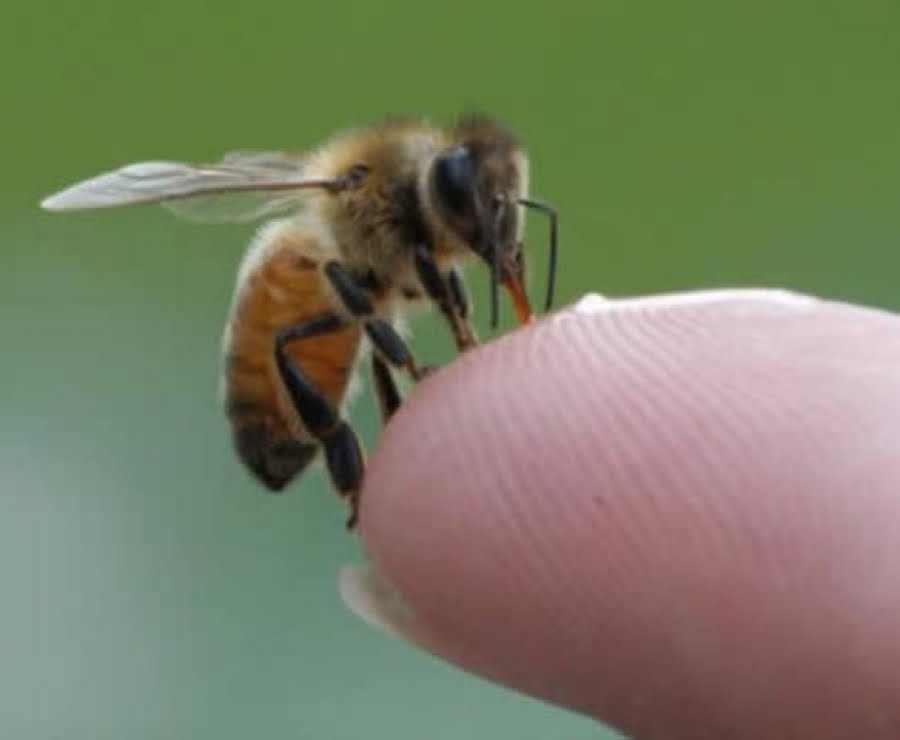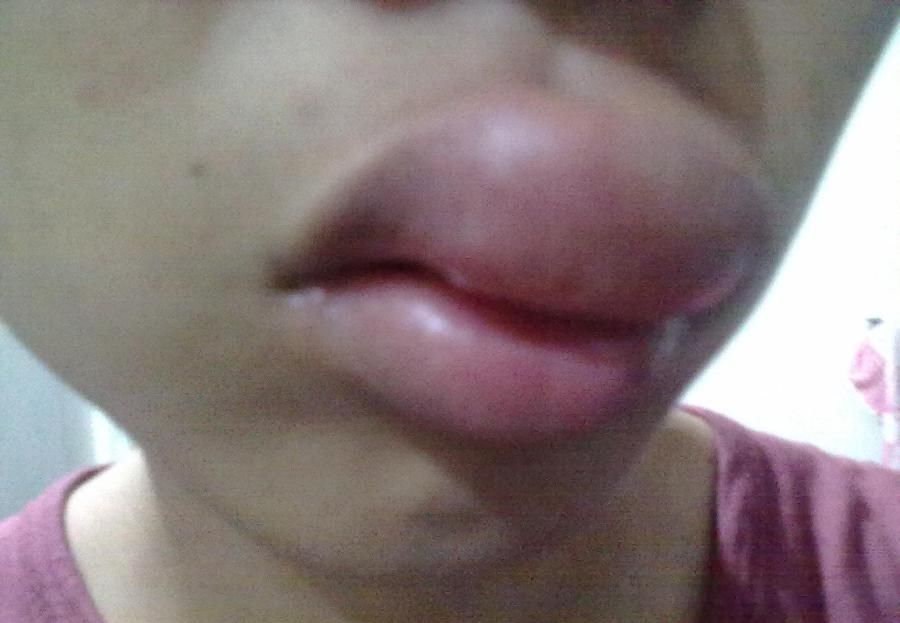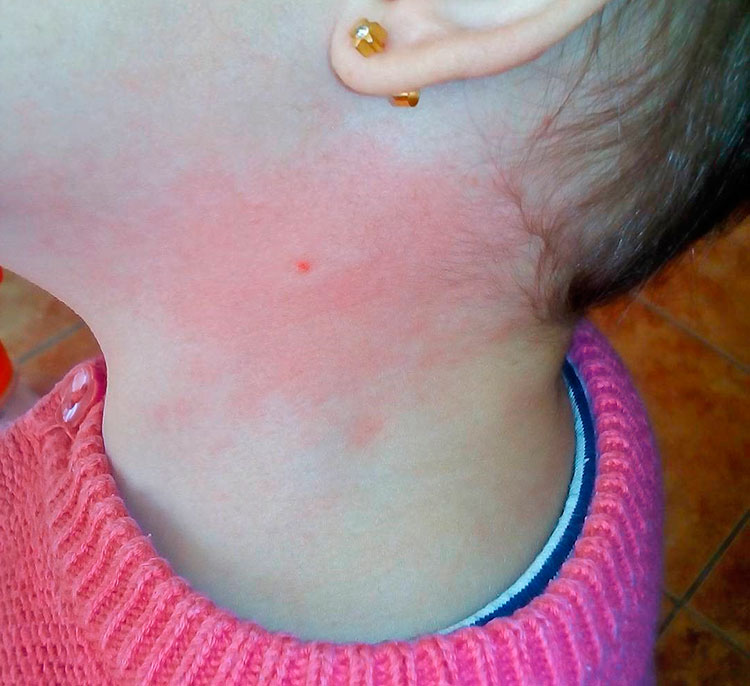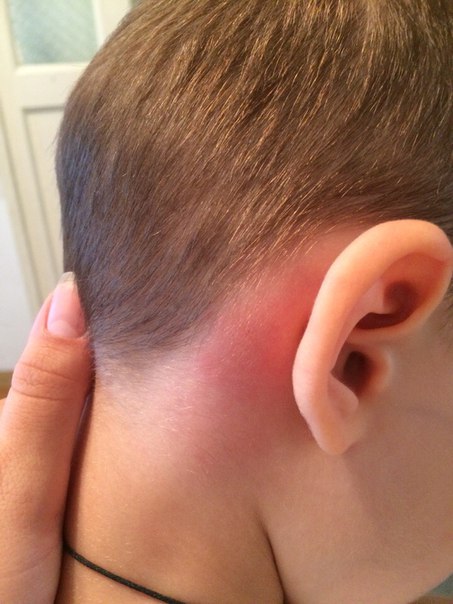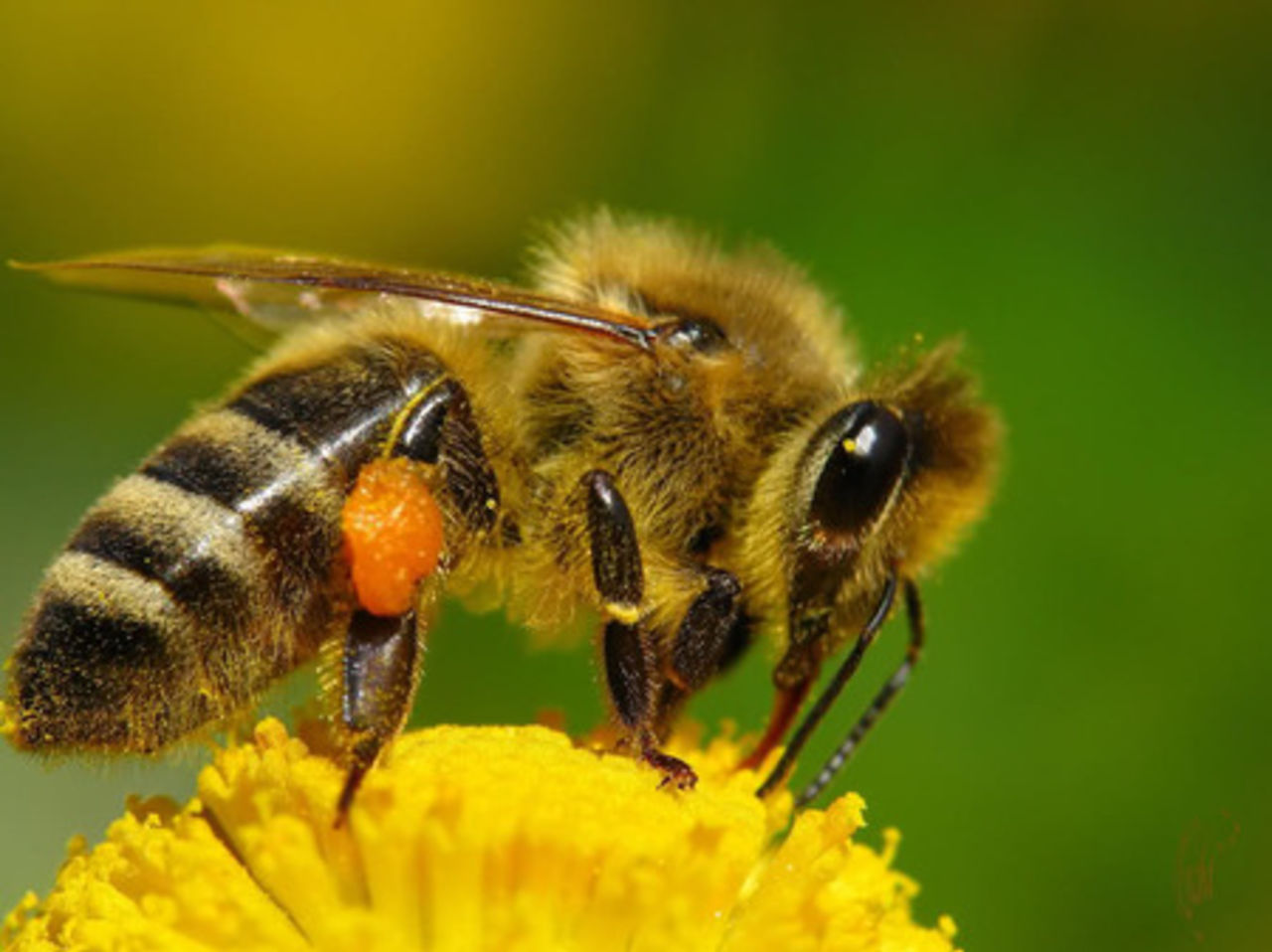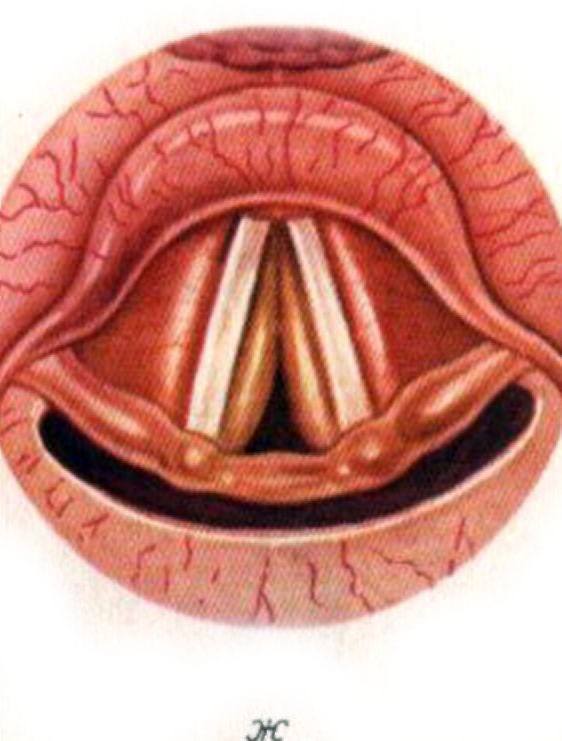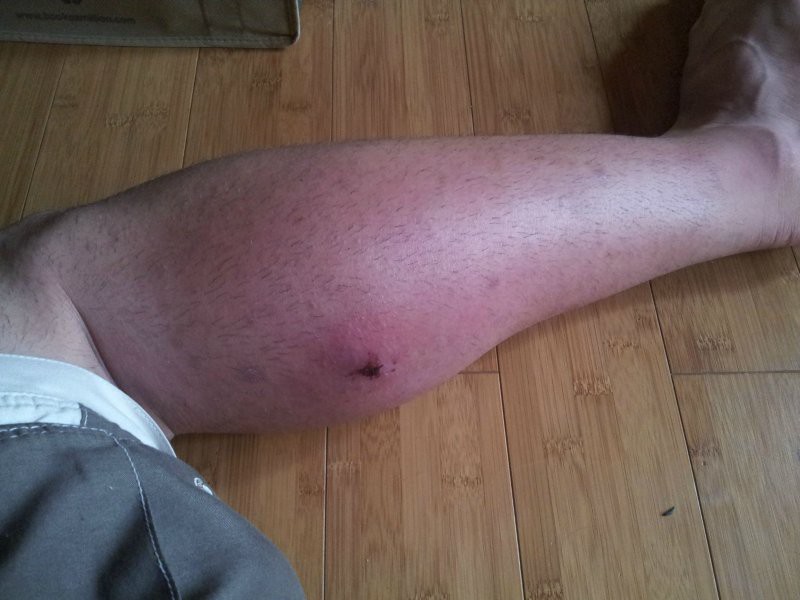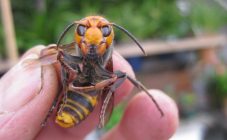Content:
When working in an apiary, there is a risk of being bitten by bees. Despite the peaceful attitude, bees can begin to sting when their life is threatened. For such cases, the beekeeper should always have a first aid kit on hand. However, there may not be any medical means in nature, in which case you need to know what you can take as the first measures.
If bitten by a bee
What to do if bees bitten? Initially, you need to inspect the bite site. Unlike wasps, after bees, a sting remains in the tissues. Leaving it, you can get swelling, since a bag of poisonous substances is attached to it. If a stuck tip is found, carefully remove it. Tweezers are ideal. If it is absent, you can try to pull out the sting with your nails. If the sting is stuck in the thickness of the skin, it is required to disinfect the place and pull the sting out with a needle.
What if bitten by a bee? As disinfectants, you can use:
- any alcohol solutions (calendula tincture and others);
- an aqueous solution of potassium permanganate;
- diluted 1: 5 ammonia;
- clean running water in the absence of any other means.
You can reduce pain in the stung place using:
- compress from saline solution (1 teaspoon in 1 glass of water);
- rubbing the powder of acetylsalicylic acid;
- liquid soap - it helps to neutralize toxic substances;
- analgesics based on hydrocortisone, pramoxine or lidocaine;
- dandelion juice, cucumber, plantain leaves or rhubarb.
If you observe signs of anaphylactic shock, you must immediately call an ambulance. Before her arrival, it is necessary to lay the victim, cover and give 2-3 tablets of the available antihistamine. In addition, you need to provide an abundant sweet drink in the absence of swelling of the larynx, tongue or pharynx.
In the event of cardiac arrest and respiratory arrest, chest compressions and artificial respiration are required. If you observe sudden swelling of the skin or mucous membranes (angioedema), an antihistamine should be administered intravenously as soon as possible.
In addition to mandatory medical care measures, you must follow the following rules of conduct:
- it is forbidden to crush the stung bee, since at its death a substance is released that provokes the aggressive behavior of other surrounding bees;
- to avoid the spread of poison through the tissues, do not rub or scratch the damaged area;
- the use of alcohol is strictly prohibited - it contributes to the accelerated spread of toxic substances, due to the expansion of the walls of blood vessels;
- covering the stung area with clay or earth can lead to tetanus infection;
- sleeping pills should not be taken, as they can increase the toxic effect.
First aid for various bites
Bees bitten what to do if a particular part of the body is damaged? A bee sting on the lip or tongue is especially dangerous. The absence of protective membranes, the abundant content of blood vessels pose a danger to the rapid entry of poison into the bloodstream, spreading throughout the body.
Lip bite
With a lip bite, help should begin with preventing the development of edema. After removing the sting, without damaging the capsule with toxic substances, you need to treat the place with hydrogen peroxide or iodine. Ice or other refrigerated object should be applied to slow blood flow and reduce swelling. Drinking plenty of fluids stimulates the processes of removing toxins from the body, salt and soda lotions help to relieve swelling from the cheek and itching.
Tongue bite
The soft tissues of the tongue show a local allergic reaction more acutely than others. The rapidly spreading poison between the muscles of the tongue causes severe pain that can trigger a migraine attack. The tongue can become very swollen, making it difficult to breathe and swallow.
What can you do after a bee sting? If it is impossible to contact a medical institution, anti-inflammatory, antihistamines should be taken. The edema subsides within two days, all other consequences (violation of the swallowing processes, difficulties in chewing food and verbal communication) disappear after a couple of weeks.
Neck bite
A bite in the neck is one of the most dangerous because of the risk of suffocation. The occurrence of wheezing or wheezing through the nose is a sign of respiratory failure. Such consequences cannot be cured on their own. Only qualified medical care will help preserve the life and health of the victim. If it is impossible to independently perform the breathing act, a hollow tube is installed in the throat cavity. With the development of severe edema, threatening tissue rupture, a dissection of the anterior wall of the throat is required.
A bite in the finger or palm
Bites on the finger or part of the palm are the most harmless. The ability to localize and prevent the spread of toxic substances by applying a tourniquet allows you to quickly and efficiently provide first aid. The same steps can be taken for bee stings in the leg. It also reduces the risk of developing an allergic reaction.
Bite in the ear
When a bee stings in the earlobe, the swelling can spread to the behind the ear. You can relieve pain and reduce swelling by treating the place with vodka or any alcohol solution. Cold compresses and table salt can help relieve itching. The swelling can persist for several days.
Bite in the face
Damage by the sting of the bee to the tissues of the face near the eye can lead to its closure. It is imperative to remove the sting as soon as possible, since during the pulsation, poisonous substances are emitted from the bag attached to it. You can neutralize the poison with a crushed aspirin tablet by applying it to the affected area. Activated carbon will also help to quickly adsorb toxins. To do this, you need to prepare a paste from crushed tablets and water and apply it to the bite. You can prolong the effect of this method by covering the area with wet gauze.
Bite into the sky
Bee stings in the sky are dangerous because of the rapid development of anaphylactic shock and the spread of extensive tumors. This leads to difficulty in swallowing and possible formation of throat edema. It is forbidden to treat such bites on your own. To remove the sting with poisonous substances, specialized assistance is required due to the lack of free access to the bite site.
Eyebrow bite
What to do if a bee stung in the eyebrow? Severe, spreading puffiness of the eyebrow across the forehead after stinging can lead to swelling of the eye. Self-help treatment is almost the same as all other cases. However, use alcohol compresses with caution, avoiding eye contact. It is recommended to apply freshly prepared gruel from parsley, rhubarb or plantain.
Actions for the formation of edema
In the fight against the resulting inflammatory process, it is better to use specialized ointments and gels for insect bites. They quickly relieve itching, pain and swelling.
To reduce pain, you can use topical preparations based on lidocaine, hydrocortisone and pramoxine. To eliminate the toxic effect of the poison, the use of antihistamines is recommended. Antiallergic drugs can be taken in combination with analgesics up to three times a day.
The resulting laryngeal edema can be relieved by the administration of 5% ephedrine. Respiratory distress or a sharp decrease in pressure must be stopped by injections of adrenaline. In the most dangerous cases, with swelling of the larynx, a tube is inserted into the trachea, which helps in the implementation of the respiratory function, a session of droppers is prescribed.
In the absence of access to pharmaceutical preparations, you can use folk remedies. The simplest and most effective is a soda compress. To do this, sprinkle the bite with baking soda and add a few drops of water until a pasty mixture is obtained.
Applying a mass of crushed activated carbon will remove edema within a day. Alcohol compresses based on 70% ethyl alcohol have the same effect. Applying ice immediately after the bite will quickly relieve pain and burning sensation.
You can draw out the poison that has got into the wound with the help of refined sugar, applying it to the bite site. You can remove toxins with tea tree extract. Mint, celandine, or parsley gruel can quickly soothe the pain and throbbing of the affected area.
The consequences of a bee sting
Depending on the state of health and age, the effects of a bite can be varied. Individual manifestations may include fever and weakness. Headache, nausea, vomiting and diarrhea are the consequences of the spread of poisonous substances through the bloodstream.
Various manifestations of an allergic reaction are possible. It can be itching, rash, changes in skin pigmentation. The most severe manifestation of allergies is anaphylactic shock. The rapid manifestation of negative symptoms in a hypertrophied form often threatens the victim's life. It is necessary to stop such signs immediately after the incident and immediately seek qualified medical help.
What to do with a bee sting? Summarizing the above, it can be concluded that a bee sting is undesirable and painful. Having carefully examined the affected area, it is necessary to carefully remove the sting with a poisonous component. To prevent the development of puffiness, you can resort to both special means and folk recipes.
Having found the initial symptoms of allergic reactions, you should seek medical help without panic. First aid before the arrival of doctors consists in the use of antihistamines, ensuring the rest of the victim. With a bite on the limbs, it is possible to limit the spread of poisons by applying a tourniquet above the injury. In this case, you must record the application time in a note and attach it under the bandage. Calm and competent implementation of first aid measures will reduce the risks of complications to a minimum.
